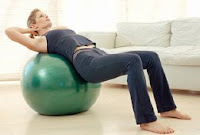J Electromyogr Kinesiol. 2009 May 23; Nelson-Wong E, Callaghan JPPURPOSE AND SCOPE: Low back pain development has been associated with static standing postures in occupational settings. Previous work has demonstrated gluteus muscle co-activation as a predominant pattern in previously asymptomatic individuals who develop low back pain when exposed to 2-h of standing. The purpose of this work was to investigate muscle co-activation as a predisposing factor in low back pain development while including a multifactorial approach of clinical assessment tools and psychosocial assessments to identify individuals who are at risk for pain development during standing. RESULTS: Forty percent of participants developed low back pain during the 2-h of standing. Pain developers demonstrated bilateral gluteus medius and trunk flexor-extensor muscle co-activation prior to reports of pain development. Pain developers and non-pain developers demonstrated markedly different patterns of muscle activation during the 2-h of standing. A novel screening test of active hip abduction was the only clinical assessment tool that predicted pain development. CONCLUSIONS: Gluteus medius and trunk muscle co-activation appears to be a predisposing rather than adaptive factor in low back pain development during standing. A combination of a positive active hip abduction test and presence of muscle co-activation during standing may be useful for early identification of at-risk individuals.



